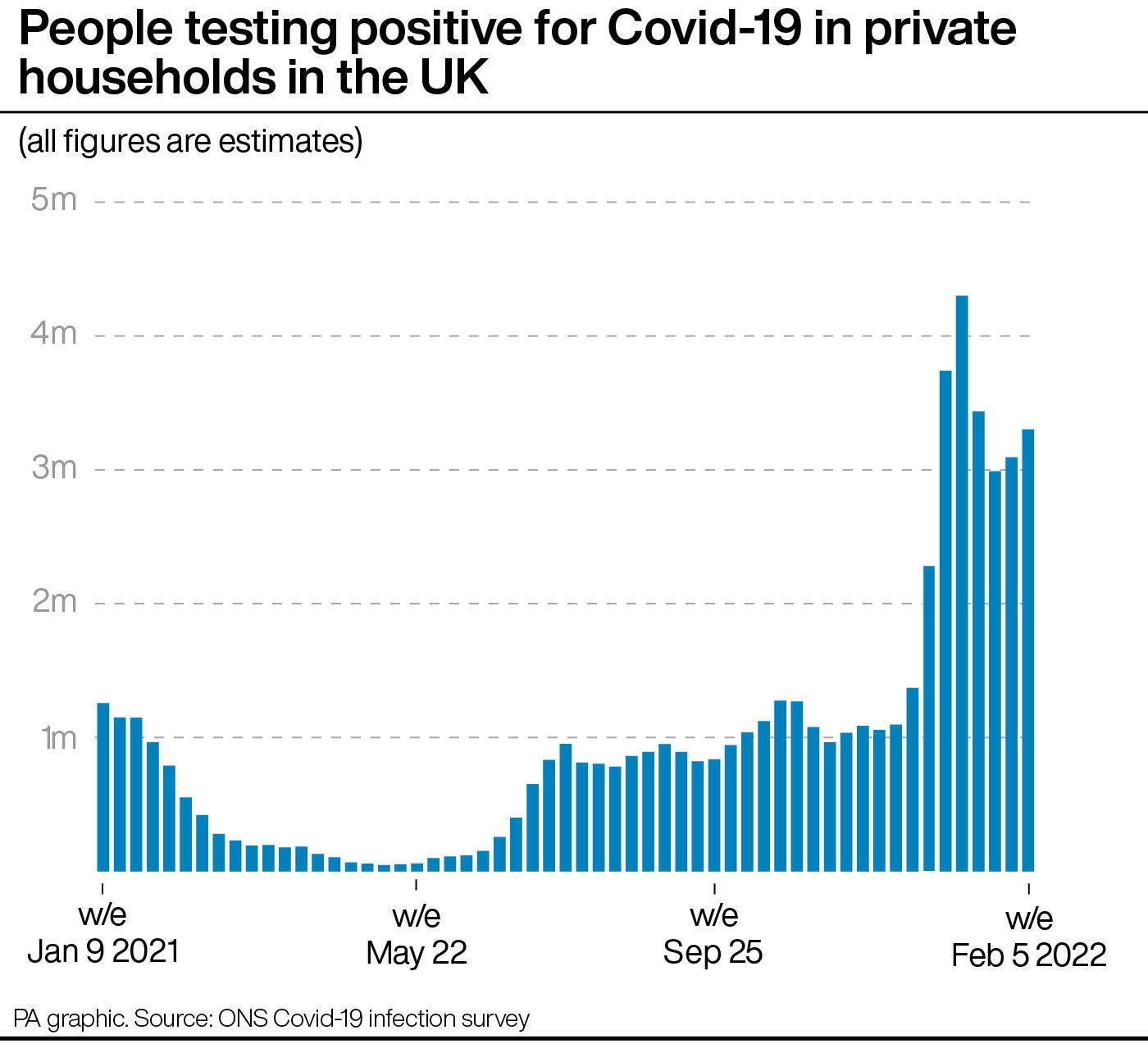
Covid-19 infection levels have risen in three of the four UK nations, with only Wales showing a fall, new figures suggest.
Scotland and Northern Ireland both saw an increase last week in the number of people in private households likely to have coronavirus, according to the Office for National Statistics (ONS).
England also saw a rise, though the trend here is “uncertain”, the ONS said.
The figures show there is still a high prevalence of the virus across the country, with infections remaining well above pre-Christmas levels.

Around one in 19 people in private households in England had Covid-19 in the week to February 5, or 2.8 million people – up from one in 20, or 2.6 million people, in the week to January 29.
The estimates were published just hours after Prime Minister Boris Johnson signalled that laws requiring people in England with Covid-19 to self-isolate could be lifted within weeks.
In Scotland, around one in 25 were likely to have Covid-19 last week, or 211,300 people, up week-on-week from one in 30, or 185,100.
Northern Ireland also saw an increase, up from one in 15 people (or 136,300) to one in 13 (145,600) – the highest level since the ONS began estimating infections for this part of the UK in autumn 2020.
But infections have fallen in Wales, down from an estimated one in 20 people (or 139,000) to one in 25 (121,200).
Across the UK as a whole, 3.3 million people were likely to have had Covid-19 last week, up from 3.1 million the previous week.
The ONS infection survey is the most reliable snapshot of the prevalence of coronavirus in the UK.
It is based on a representative sample of swab tests collected from tens of thousands of households, and is therefore able to estimate the percentage of people likely to test positive for Covid-19 at any one point in time – regardless of when they caught the virus, how many times they have had it and whether they have symptoms.
By contrast, the number of cases of Covid-19 announced each day by the Government is limited only to those people who have reported themselves as testing positive for the virus, and is affected by how many people are coming forward for tests or who are taking a test because they know they have coronavirus symptoms.
Mr Johnson told the House of Commons on Wednesday that he will present his plan for “living with Covid” when Parliament returns from a short recess on February 21.
At Prime Minister’s Questions he said: “Provided the current encouraging trends in the data continue, it is my expectation that we will be able to end the last domestic restrictions – including the legal requirement to self-isolate if you test positive – a full month early.”
The restrictions are currently due to expire on March 24.
While infections continue to remain high in England, the number of people in hospital with Covid-19 has fallen in recent weeks, though it is still above the level seen before Christmas.
The number of patients in mechanical ventilator beds is now at its lowest since last July, however.
When estimating infections among age groups in England, the ONS found that around one in nine children (11.5%) from age two to school year 6 are likely to have had Covid-19 last week, the highest level for any age group.
This is down from one in eight, or 13.1%, the previous week.
For children in school years 7 to 11 the estimate was around one in 11 (8.7%), up week-on-week from one in 13 (7.6%).







